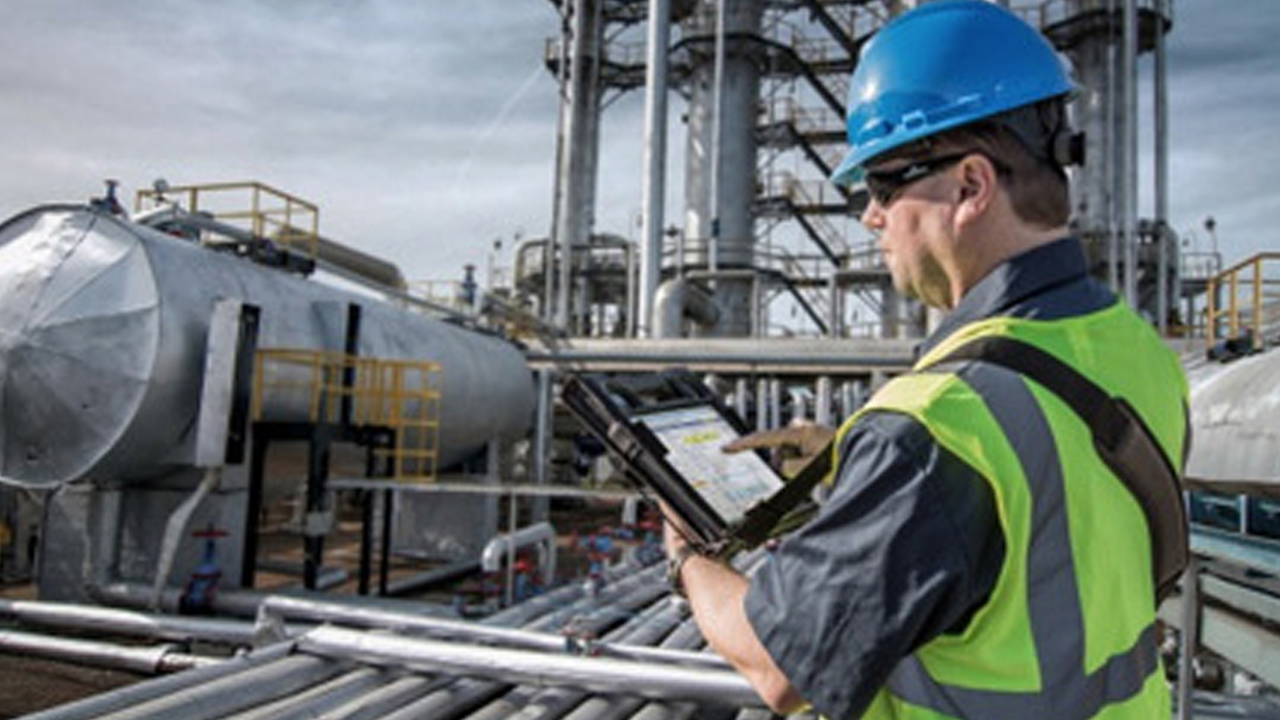
Why a C1D2 or ATEX/IECEx Certification Should Spark More Interest Among Those in Explosive Work Environments
As I mentioned last week, the Class 1, Division 2 (C1D2) and ATEX/IECEx frameworks are two of the most widely accepted safety standards for products used in hazardous environments. But, based on some conversations that I’ve had with some of you, I feel compelled to stress that an ATEX/IECEx (or even merely C1D2) certification should be a mandatory criteria during your rugged mobile computer selection process if you’re sending even a single worker into a potentially explosive environment with a device in hand. You should be asking your mobile solution provider to present the ATEX/IECEx Declaration of Conformity (DoC) before you declare your commitment to any rugged tablet, handheld mobile computer or even laptop.
Why, you ask?
Consider an offshore oil rig. It’s typically a complex with housing, offices, operations control rooms and a drilling platform – all of which are almost uncomfortably close to one another. The drilling platform often has an explosive atmosphere (for obvious reasons), and oil companies need to ensure that any electronic device brought near the drilling area be certified as safe for use around those common spark and high heat elements. Not only for the workers on the platform but the safety of all personnel and infrastructure confined to the rig.
One way to confidently ensure this level of safety is to equip all mobile users with electronic devices that are C1D2 or ATEX/IECEx certified. Oil rig operators are concerned that, despite policy and warning signs, workers may accidentally carry a non-compliant mobile computer from their office onto the platform. The risk of a “simple” mistake like this is too much of a risk to take. Other oil and gas operations have decided that their procedures are robust and simply limit access to secure explosive areas to approved workers with C1D2 or ATEX/IECEx-certified rugged tablets. Either approach is viable.
Mining operations and woodworking shops have similarly risky areas:
- Fine combustible dust found airborne at many mining sites and chemicals commonly used to help extract minerals can create explosion hazards.
- In some cases, the fine wood dust or the VOC finishes used in cabinet construction shops, for example, can create a hazardous atmosphere.
As do some rail yards, flight lines and ports:
- Contents of shipping containers and packages moving through ports and cargo airports contain virtually every type of product sold in consumer and commercial markets. The manifest may or may not correctly identify ones with a combustibility hazard.
All of these industries are under stress to become more efficient due to competitive pressures. But, oil, gas and mining companies are extracting resources that are more difficult to get out of the ground, which demands the use of mobile technology tools that can deliver GIS data, improve asset monitoring and expedite equipment maintenance. (Every extra minute it takes to diagnose a stalled drilling tool or repair an out-of-service excavation vehicle equates to a financial loss in some capacity.) Using older pen and paper methods isn’t practical. The only safe way to execute these mobile workflows is to use rugged mobile computers that are safe for the environment.
Of course, the easiest way to do that is to select only C1D2 or ATEX/IECEx-certified devices for workers in these environments. But I always tell people, no matter what type of mobile device they are buying or why, don’t be too quick to take something at face value. The spec sheet doesn’t always speak to the quality of a device. It just verifies that certain minimum standards were met without necessarily explaining how.
For example, there is a lot that had to be engineered into Zebra’s industrial-grade rugged tablets to make them safe to use in the explosive atmosphere.
Here’s how David Ball, Certification Manager for Zebra Technologies, outlined some of the work:
“Since we manufacture electronic equipment, we have implemented techniques applicable to both “live use” and tablet failure situations. Critically, we focus on preventing sufficient electrical and thermal energy so that combustion cannot occur regardless of surrounding hazards.
Some of our detailed design techniques include:
- The use of Zener diodes to limit voltage
- A “fail safe” short to the ground, (Yes, we even consider how to keep the tablet safe even in failure conditions, as rare as these failures may be.)
- Confirmation of compliance through additional testing: HERO (Hazards of Electromagnetic Radiation for Ordinance) and Explosive Atmosphere testing, Mil-Std 810F, Method 511.5, Procedure I”
But a discussion of mobile devices for hazardous work environments would not be complete without recognizing that the devices must survive very harsh treatment. Working outdoors or in deep mines, with heavy machinery and other tools, in extreme temperature and humidity conditions, requires extremely rugged tablet computers – something that Zebra excels at.
Just as a device is designed for explosive atmospheres, it must also be designed for ruggedness and versatility. Mining workers often have to carry their tools through runoff ponds on foot, and sometimes they slip and fall. Those workers are tough; so too must be their tablets. But tough isn’t always enough.
When eliminating – not just minimizing – risk is non-negotiable in explosive mobile work environments, make sure you invest in a tablet solution and a partner that can demonstrate how the certified safety of its technology best matches your need.
###
Editor’s Note: In case you missed it, Zebra’s L10 rugged tablet lineup now has multiple configurations that are C1D2 or ATEX/IECEx certified. Visit the website or contact our tablet team to learn more.
You can also drop us a note in the Comments section below if you have questions for Bob or the tablet team.


Bob Ashenbrenner
Durable Mobility Technologies, LLC, under the direction of Bob Ashenbrenner, works with Zebra Technologies to develop future-proof mobility solutions for customers across multiple field service and industrial sectors. As an industry consultant, Durable Mobility Technologies, LLC, is focused on optimizing rugged tablet-based solutions for mobile workers of all kinds, including utility and public safety professionals. Ashenbrenner is particularly committed to helping customers identify mobile devices that survive a tough work day, run all the software and tools needed today, and will remain flexible and scalable to adapt to evolving technology applications as business needs dictate.
Ashenbrenner has more than 25 years of computer engineering and engineering management experience, with 18 of those specific to mobility and the field requirements that enable real work to happen. He was previously a Solutions Architect with Xplore Technologies and Motion Computing for 13 years. In that role, Ashenbrenner led the development of a suite of rugged mobile tablet computer, services and software, with an emphasis on supporting the whole mobile work environment.






